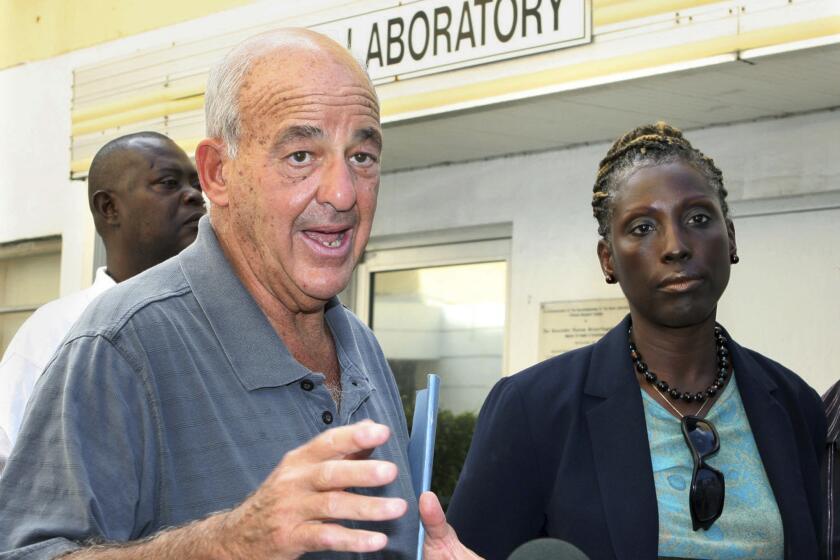Little Growth or Decline in Membership Is Seen at Nation’s Churches : Trends: The size of denominations held steady from 1991 to 1992, data shows. Most reported increases or decreases of 1% or less.
Church growth appears to be flattening out in the United States.
The good news is that not one of the nation’s 10 largest church bodies reported a membership decline of more than 1% in the new “Yearbook of American and Canadian Churches 1994.”
But neither were there any signs of dramatic church growth, with most churches reporting increases of less than 1%.
For churches such as the Southern Baptist Convention, coming off a generation of rapid increases that helped it become the nation’s largest Protestant denomination, the church growth figures indicate a spiritual malaise.
“We’re crying out to God for a fresh touch for our land. We pray that it will fall upon Presbyterians, Episcopalians and Baptists,” said the Rev. Mark Coppenger, a Southern Baptist spokesman.
“That’s our main agenda right now--revival in America.”
The church membership figures, collected by the National Council of Churches, are not always comparable from denomination to denomination because most church groups keep their own statistics and use different methods for determining their memberships. Some denominations only make estimates.
But the church council says that the yearbook data is as near an official record of denominational statistics as is available.
In the latest edition of the yearbook, no substantial membership changes were reported by the nation’s 10 largest churches from 1991 to 1992.
“This year represents a fairly stable year across the board,” said Kenneth Bedell, yearbook editor.
The National Baptist Convention U.S.A. Inc. reported a 2.5% membership gain, going from 8 million to 8.2 million members. The Church of Jesus Christ of Latter-day Saints reported a 2.16% jump from 1991 to 1992, with membership increasing to 4.43 million.
The nation’s largest religious group, the Roman Catholic Church, grew 1.63% to 59.2 million members in 1992, according to the yearbook.
But most large church bodies reported membership gains or declines of less than 1%.
The Evangelical Lutheran Church in America lost two-tenths of a percent to drop to 5,235,000 and the Presbyterian Church (U.S.A.) dropped .53% to 3,758,000. The Episcopal Church added about 20,000 members to increase slightly to 2,492,000. The United Methodist Church dropped .71% to 8,727,000.
For mainline churches, such membership figures are blessings compared to the steep declines of past decades, which cost them substantial portions of their flocks.
“I think what we are observing in the denomination is, in a sense, some good news, because the rate of loss has been reduced,” said the Rev. Mearle Griffith of the United Methodist General Council on Ministries.
Not only has the rate of membership loss been halved in the last two or three years, he said, but some annual conferences are reporting membership gains.
Conservative religious groups, which had enjoyed steady growth in recent years, are now facing leaner years.
The Lutheran Church-Missouri Synod reported growing less than a tenth of a percent to 2.6 million members. The Southern Baptist Convention reported an increase of .83% to 15.36 million members.
Sociologist William McKinney, dean of the Hartford Seminary in Connecticut, said membership trends seem to follow sociological trends.
Protestant denominations that have lost up to a third of their members since the mid-1960s are down to a more committed core of members, McKinney said.
“It’s hard to lose more people when you start from a smaller base,” he said.
Meanwhile, growth in conservative denominations has been slowed by lower population growth in the United States and the fact that many immigrants from Latin America, Asia and the Middle East are not the traditional pool from which conservative Protestant churches draw members, he said.
Coppenger, vice president for convention relations of the Southern Baptist Convention, said the news is not all bad.
“We’re still growing at the rate of 750 members and five churches a week,” he said.
Still, he said, the denomination is envious not only of its past success but of church growth movements in other parts of the world, such as Korea, Kenya and throughout Eastern Europe.
“It seems there’s a hardening in America that you don’t find in some of the mission fields around the world,” he said.
More to Read
Start your day right
Sign up for Essential California for news, features and recommendations from the L.A. Times and beyond in your inbox six days a week.
You may occasionally receive promotional content from the Los Angeles Times.






